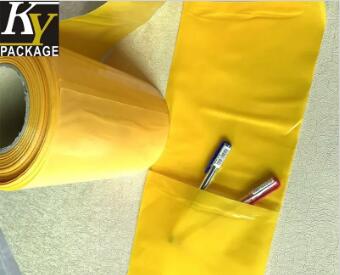Behind the Scenes: Manufacturing Pre-Opened Roll Bags and Their Material Composition
2024-04-15
Pre-opened roll bags have revolutionized packaging operations across industries, offering convenience, efficiency, and versatility. But have you ever wondered how these innovative bags are manufactured and what materials are used in their production? In this blog post, we'll take a closer look at the manufacturing process of pre-opened roll bags and explore the materials typically used in their production.
Manufacturing Process:
1. Extrusion:
The manufacturing process of pre-opened roll bags typically begins with extrusion, where plastic resins are melted and formed into thin sheets. These sheets serve as the raw material for producing the bags.
2. Printing (Optional):
If customization is required, such as branding, product information, or barcodes, the plastic sheets may undergo printing using techniques like flexography or digital printing.
3. Bag Formation:
Once the plastic sheets are prepared, they are fed into a bag-making machine equipped with rollers, cutters, and sealing mechanisms. The machine automatically forms the sheets into bags of the desired size and shape, sealing the edges to create airtight seals.
4. Perforation and Folding:
As the bags are formed, they may undergo perforation at regular intervals to facilitate tearing and dispensing. Additionally, some machines fold the bags in a fan-fold configuration to facilitate easy dispensing from the roll.
5. Rolling and Packaging:
Once the bags are formed and perforated, they are rolled onto cores to create pre-opened roll configurations. The rolls are then packaged and prepared for distribution to end-users.
Materials Used:
1. Polyethylene (PE):
Polyethylene is one of the most commonly used materials in the production of pre-opened roll bags. It is known for its durability, flexibility, and moisture resistance, making it suitable for a wide range of applications.
2. Polypropylene (PP):
Polypropylene is another popular choice for manufacturing pre-opened roll bags. It offers excellent clarity, heat resistance, and chemical resistance, making it ideal for packaging applications where visibility and protection are essential.
3. High-Density Polyethylene (HDPE):
High-density polyethylene is often used for applications requiring enhanced strength and puncture resistance. HDPE pre-opened roll bags are commonly used in industrial packaging and heavy-duty applications.
4. Low-Density Polyethylene (LDPE):
Low-density polyethylene is valued for its flexibility and ease of sealing, making it suitable for applications requiring airtight seals and flexibility in packaging.
5. Recycled Materials:
In line with sustainability initiatives, some manufacturers produce pre-opened roll bags using recycled materials. These bags may contain post-consumer recycled content or be made entirely from recycled plastics, reducing environmental impact and promoting circularity in packaging.
Conclusion:
The manufacturing process of pre-opened roll bags involves a series of precise steps, from extrusion and printing to bag formation and rolling. Various materials, including polyethylene, polypropylene, and recycled plastics, are utilized to meet the diverse needs of packaging applications across industries. As demand for efficient and sustainable packaging solutions continues to grow, manufacturers are innovating to optimize the manufacturing process and explore new materials that align with environmental goals.



